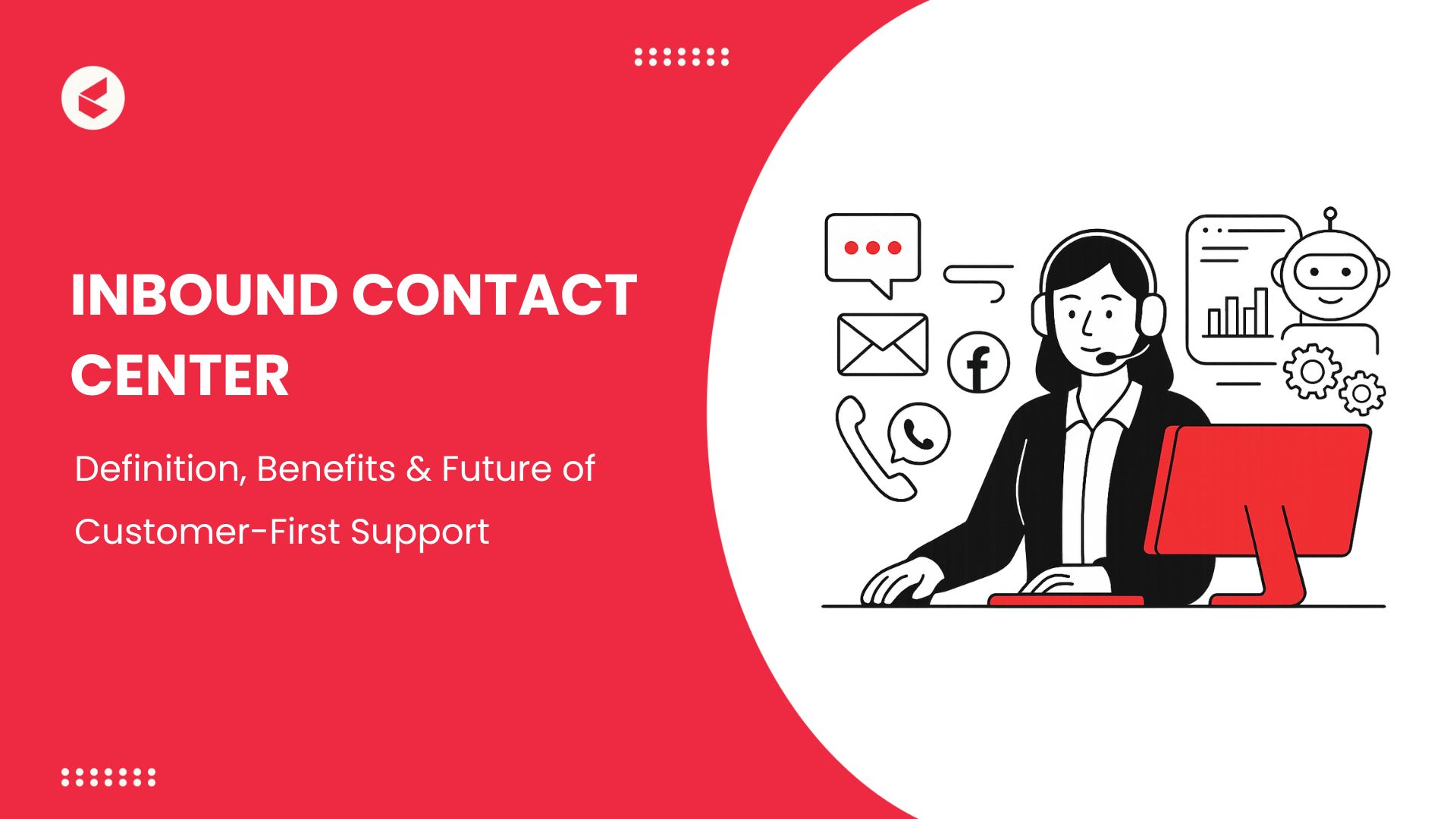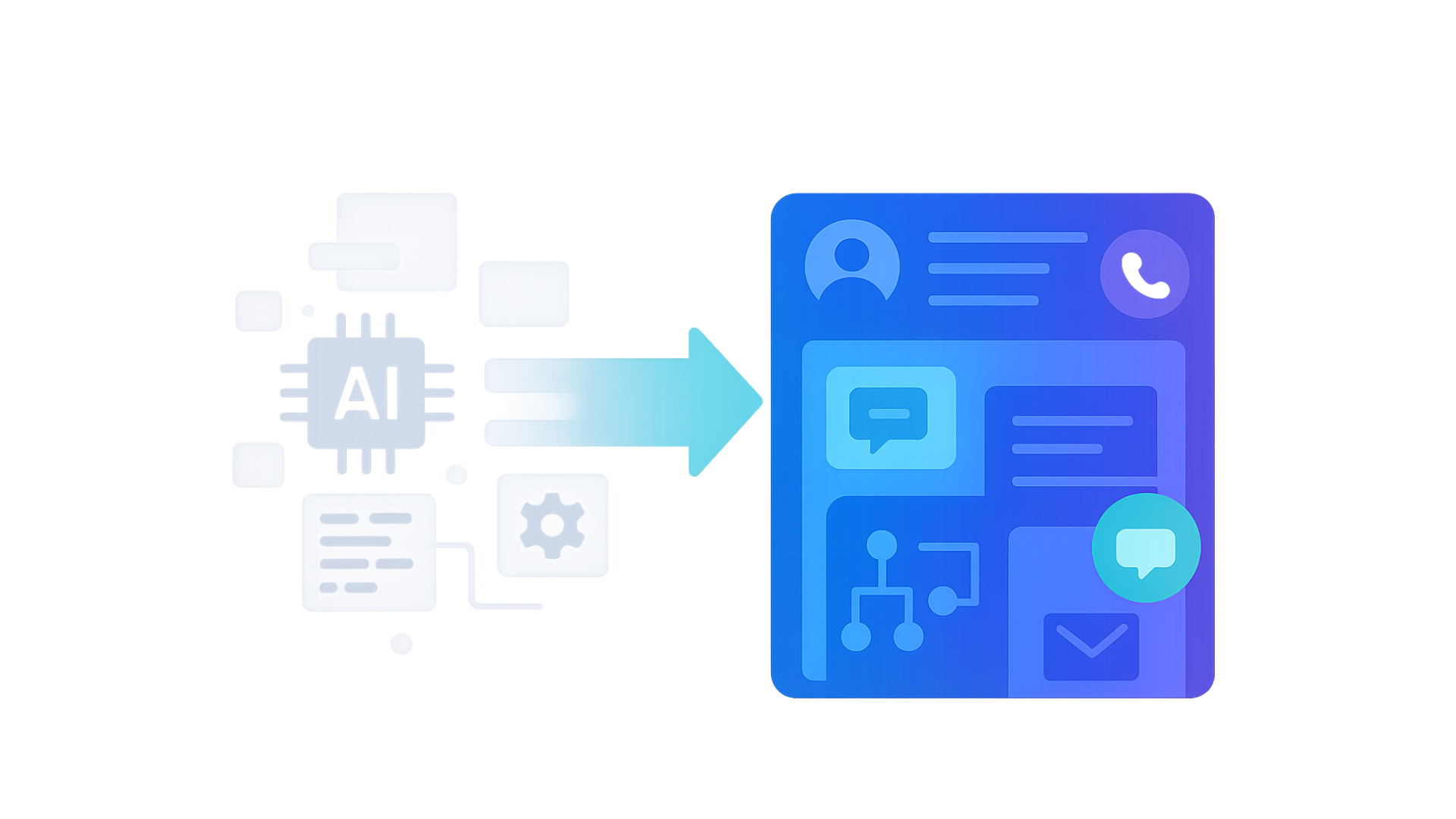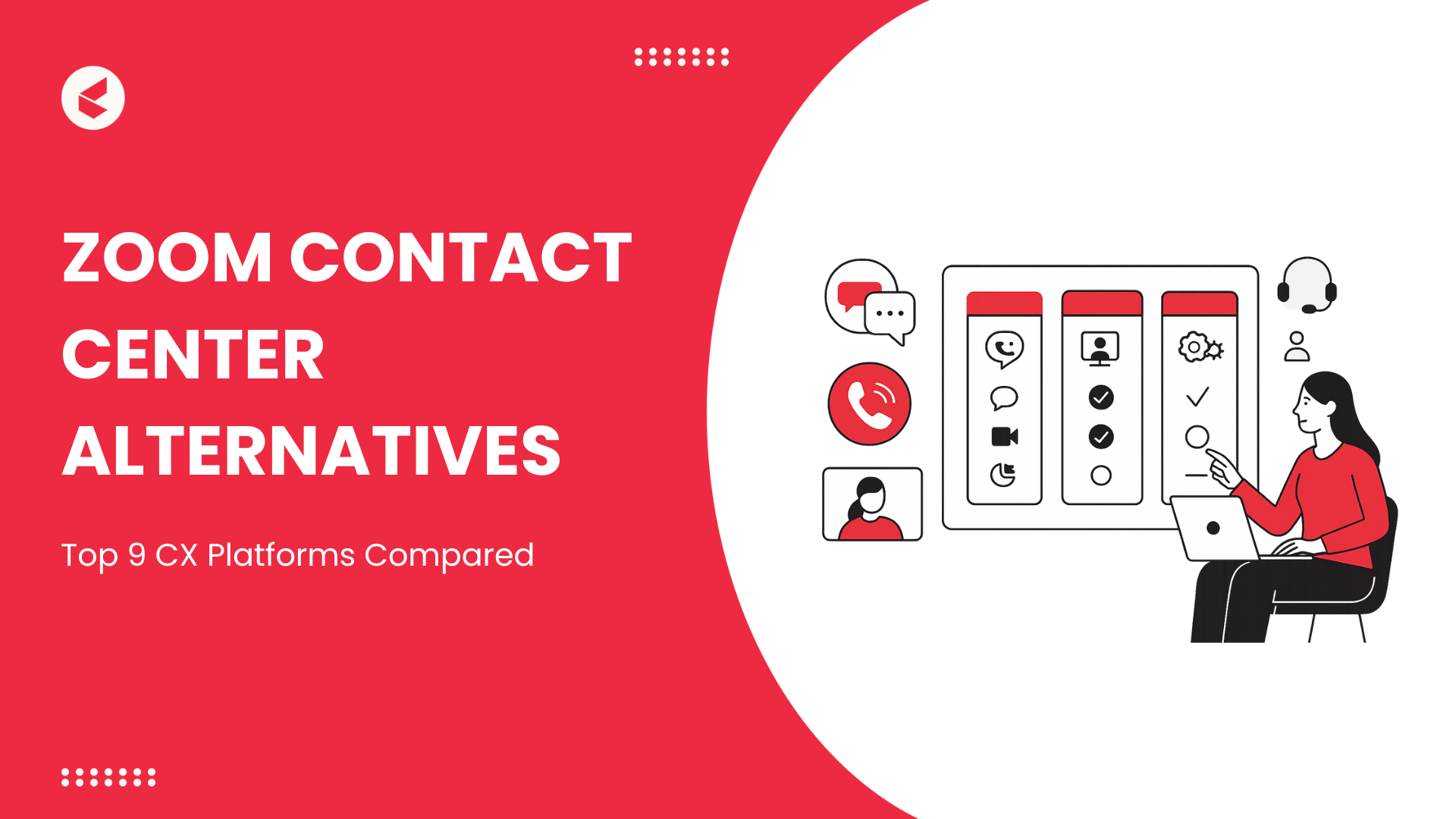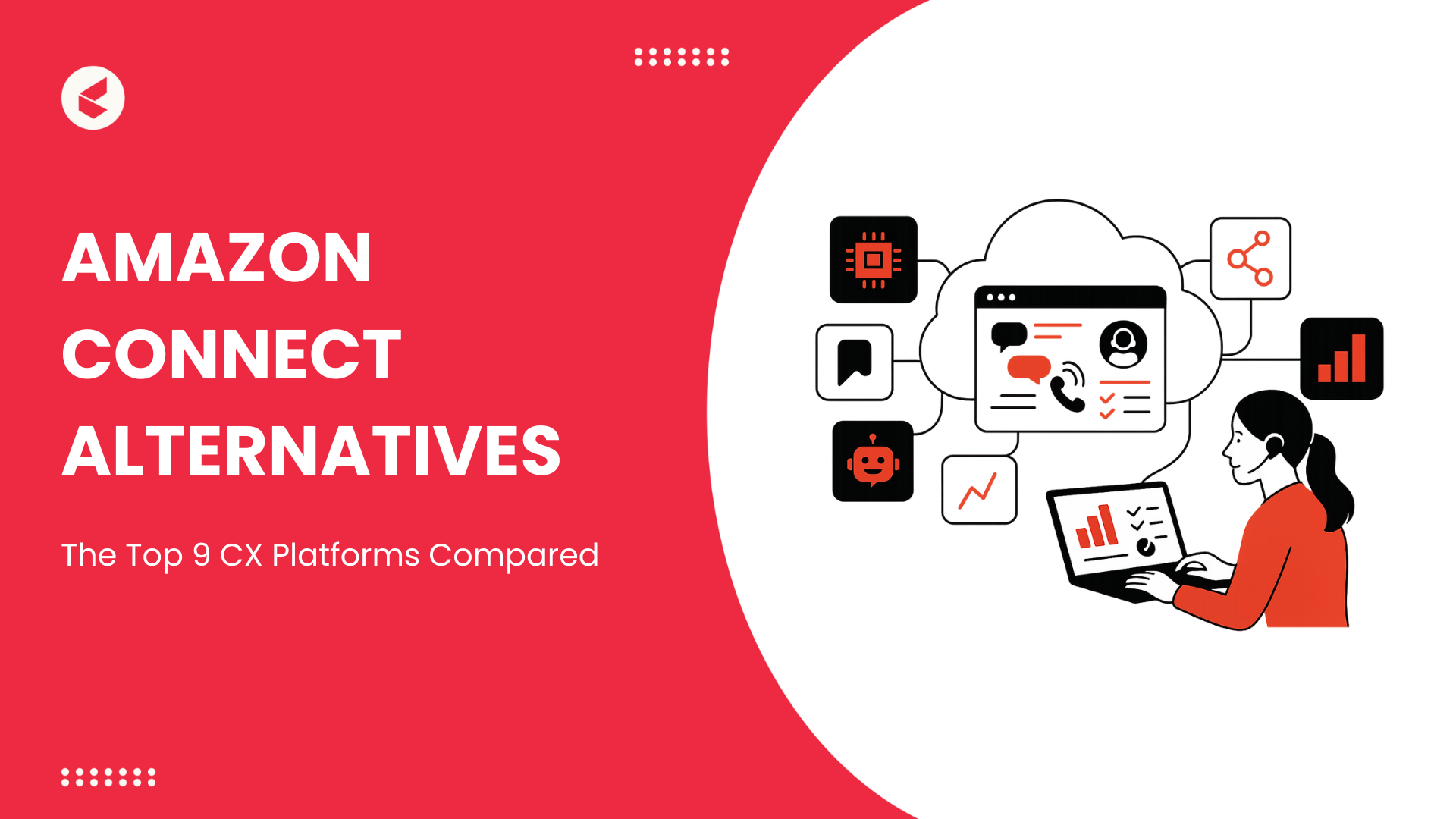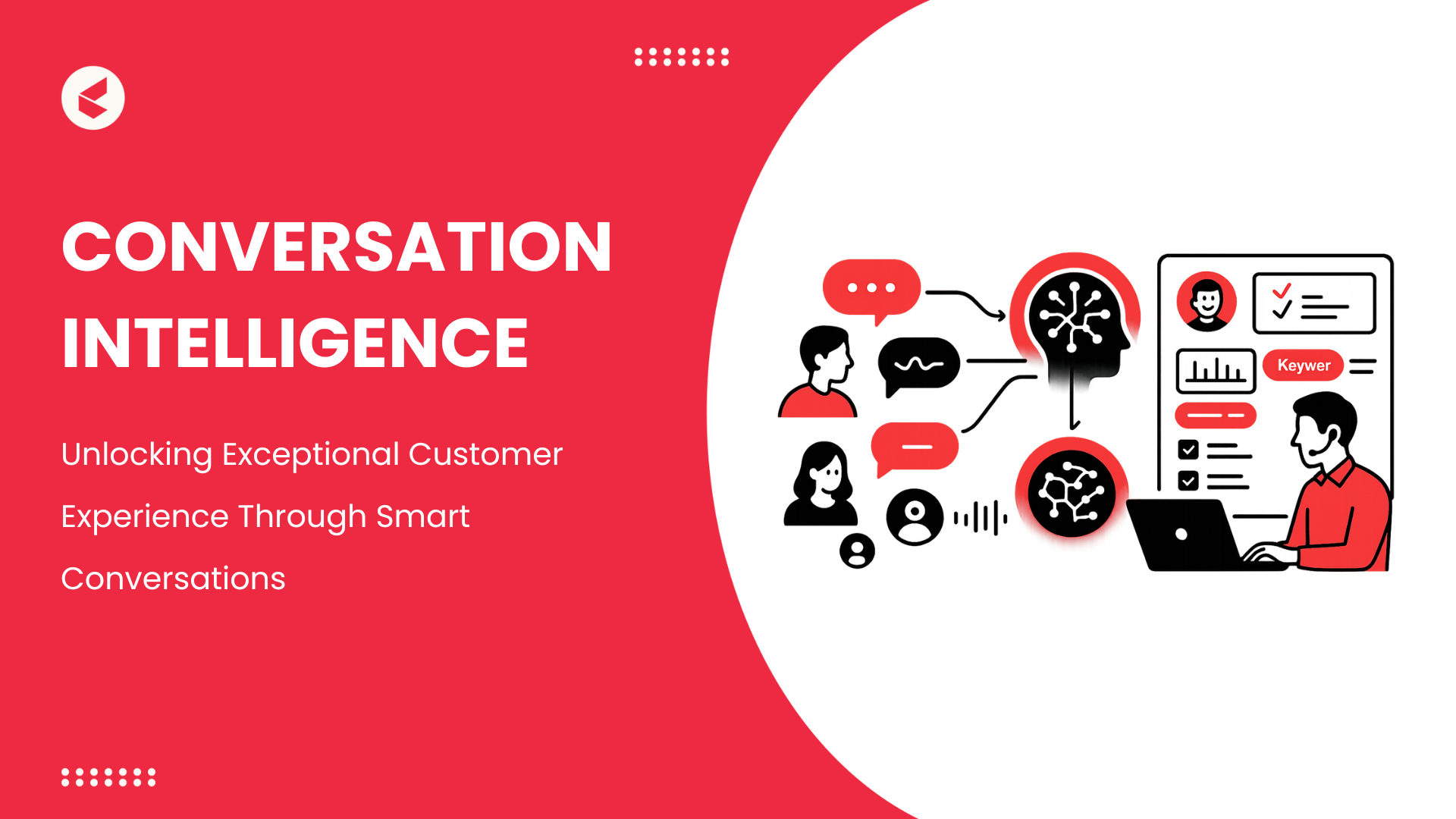Most contact centers weren’t built for 2025. They were built for angry callers, outdated scripts, and customers who didn’t know they had options.
The old idea of a passive customer is gone—today’s customer has already tweeted about their bad experience before your team even picks up the phone.
Zendesk data shows that over half of customers will leave after just one bad interaction. Give them a second, and 73% are headed straight to your competitor.
This is where inbound contact centers need a full reset. Not a tech upgrade but a mindset shift.
In this blog, we’re breaking down what inbound contact centers should be doing right now: how they’re evolving, why customer-first is an operational survival, and what the next wave of support looks like for most businesses.
How Inbound Contact Centers Work
The cleanest customer experiences often have the messiest backends, and that’s by design. A well-run inbound contact center simplifies complexity so customers feel none of it. Let’s walk through a typical interaction flow:
1. The Customer Gets In Touch
Maybe it’s a DM on Instagram, a call on a lunch break, or a quick WhatsApp message. With omnichannel platforms like Kapture, all these channels are connected. The customer doesn’t have to repeat themselves, and the conversation continues smoothly, wherever it left off.
2. The System Figures Out Why They’re Here
Instead of waiting in a queue, the customer is greeted by a voice bot or chat assistant. This kind of inbound automation uses AI to detect intent, retrieve past interactions, and begin resolving basic queries instantly—streamlining the support experience in AI-driven inbound contact centers.
3. The Right Agent Is Assigned
If the issue needs human attention, it doesn’t just land on the first available agent. Using real-time context, skill-based routing can send it to someone who’s equipped to handle it.
4. The Agent Responds With Context
The agent sees everything: what the customer’s asked before, what’s already been said, and what’s still unresolved. They then resolve the customer’s query and communicate with them for the same.
Inbound vs. Outbound Contact Centers
Inbound centers are built to solve problems. The customers reach out when something’s wrong or they need help. Outbound centers, on the other hand, are more proactive. They’re used for follow-ups, reminders, surveys, or sales outreach. Here’s how the two compare:
| Aspect | Inbound Contact Center | Outbound Contact Center |
| Primary Objective | Respond to customer queries, provide support, and build customer relationships | Initiate contact for sales, lead gen, feedback, or proactive service |
| Tone of Interaction | Service-oriented, empathetic, solution-focused | Goal-driven, persuasive, and often scripted |
| Tools Used | IVR systems, omnichannel support platforms, CRM, sentiment analysis, agent assist AI | Auto-dialers, lead management software, call scripts, campaign analytics |
| Channel Focus | Multichannel and omnichannel: phone, chat, email, social media | Primarily voice, SMS, and email |
| Key KPIs | First Contact Resolution, CSAT, AHT, Abandonment Rate, NPS | Conversion Rate, Calls Per Hour, Response Rate, Cost Per Acquisition |
| Role in CX | Central to the post-sale experience, directly impacts satisfaction and loyalty | Supports outbound contact center goals like lead gen and proactive engagement |
| Agent Skill Focus | Problem-solving, emotional intelligence, and multitasking | Sales techniques, objection handling, and script adherence |
Core Functions of an Inbound Contact Center
An inbound contact center does far more than just field support calls. It’s a central hub that handles everything from account changes and subscription management to high-stakes issue resolution. Inbound contact centers today handle more than just queries—their role spans multiple departments and use cases. Let’s take a deeper look:
Industries That Depend on Inbound Support
Any business that deals with product issues or service delivery needs an inbound support system. Here’s a detailed look at where inbound support pulls its weight:
| Industry | Use Case | Company Size | Why It Matters |
| Ecommerce & Retail | Order tracking, returns, and payment issues | Mid-sized to enterprise | High volume, high expectations, need for fast and accurate resolution |
| Healthcare & Pharma | Appointment scheduling, billing support, and prescription info | SMB to Enterprise | Sensitive data, strict compliance, and urgency in service |
| Telecom & Utilities | Outage reporting, plan upgrades, and billing queries | Enterprises | Massive customer base, frequent service touchpoints |
| Fintech & Banking | Fraud reports, transaction help, and account recovery | SMB to Enterprise | Critical for trust-building and customer retention |
| SaaS & Digital Services | Technical troubleshooting, onboarding, and subscription management | SMBs to enterprises | High-value accounts, recurring revenue models require low churn and fast support |
| Government & Education | Public inquiries, document help, and form support | Institutions & agencies | Expectation of accessibility, clear communication, and data privacy |
Inbound Contact Center Benefits for Customer Experience
An effective inbound contact center directly shapes customer perception and influences ongoing brand loyalty. Here are five specific benefits:
- Early Signal Detection for Product or Service Failures: Inbound teams are the first to hear recurring complaints, whether it’s a failed login flow or payment error. These real-time signals act as an early warning system before the issue spreads.
- Live Incident Response During Crises: Whether it’s a system outage or a PR issue, inbound lines are often flooded before leadership is even aware. A responsive contact center acts as a real-time crisis buffer and keeps the brand grounded during chaos.
- One-to-One Brand Reinforcement: Unlike mass marketing, every inbound touchpoint is personal. Agents (or well-trained systems) deliver tone, language, and resolution styles that shape how the brand feels in high-stakes moments.
- Pattern Recognition Across Interactions: According to the FinancesOnline report, predictive analytics can improve contact center efficiency and productivity by up to 60%. When you handle thousands of queries a day, trends emerge. This includes rising refund requests, failed deliveries by region, or broken UX flows. This turns support data into a strategic input for product, policy, or ops teams.
Key Features to Look for in Inbound Contact Center Software
When choosing an inbound contact center platform, prioritize features that improve agent efficiency and create better experiences for your customers.
Here’s a quick-hit checklist:
- Omnichannel routing with unified interaction history
- Skill-based and intent-driven call routing
- AI-powered agent assist and reply suggestions
- Live sentiment and intent detection
- Real-time performance and queue dashboards
- Advanced IVR with natural language understanding
- CRM integration for full customer visibility
- Embedded knowledge base access for agents
- Virtual agent support for off-hour coverage
- Call and chat transcription with auto-tagging
- Workflow automation and ticket escalation rules
- Role-based agent views and permissions
- In-platform coaching and QA tools
- Post-interaction survey and CSAT tracking
- Built-in compliance and data privacy controls
Top 5 Inbound Contact Center Metrics That Matter
Tracking the right inbound contact center KPIs is what separates efficient support operations from reactive ones. Here are five core metrics every team should monitor:
| Metric | What It Measures | Why It Matters | Improvement Tactics |
| Average Handle Time (AHT) | Total time taken to resolve a ticket (includes talk, hold, and wrap-up time) | High AHT = inefficiency; low AHT = potential quality issues | Use agent-assist tools, automate post-call tasks |
| First Contact Resolution (FCR) | Percentage of issues resolved in the first interaction | Strong indicator of efficiency and customer trust | Equip agents with full context + better training |
| Customer Satisfaction (CSAT) | How customers rate their interaction post-resolution | Direct reflection of how well you’re meeting customer expectations | Use post-call surveys + analyze feedback trends |
| Abandonment Rate | Percentage of customers who hang up or drop off before speaking with an agent | High abandonment signals long wait times or inefficient routing | Improve routing logic, use callback options |
| Service Level | Percentage of contacts answered within a specific time threshold (e.g., 80% in 20 seconds) | Helps maintain SLAs and reduce wait-related drop-offs | Adjust staffing based on traffic patterns, monitor peak hours |
How Kapture CX Helps You Track and Improve These Metrics
High call volumes, bloated agent headcounts, inconsistent QA, missed SLAs, and zero context from one interaction to the next—Kapture CX tackles these head-on. By integrating AI agents trained on real conversations, Kapture helps automate repeat queries, slash average handling time, and address CX gaps.
Managers can get real-time control over agent workflows, voice bot performance, and customer sentiment without bouncing across platforms.
With Kapture, you can:
- Slash repeat contacts by auto-resolving common queries at scale before they hit your queue.
- Deploy AI voice agents in just 10 minutes* and start handling inbound calls instantly with Kapture. *Based on internal benchmarks. Actual deployment time may vary.
- Identify sudden drops in agent responsiveness, SLA adherence, or resolution quality before they impact customer experience.
- Track customer intent across voice, email, chat, and social channels even when the conversation moves between them. This maintains continuity and reduces resolution time.
- Anticipate surges in contact volume using behavioral and historical data. It enables precise staffing and resource planning.
- Isolate service delivery issues by product line, region, or team. Pinpoint systemic failures and address root causes with data-backed clarity.
Challenges Inbound Contact Centers Face Today
Inbound contact centers are facing pressure from two ends: rising customer expectations and internal operational limits. Customers expect fast, accurate answers. But behind the scenes, agents are often stuck with clunky tools, unclear workflows, and impossible workloads. Some of the core challenges include:
- Agent occupancy is too high. Employee turnover in contact centers ranges from 30% to 45%, largely driven by overwork, burnout, and limited career progression, according to Nextiva’s report. When occupancy consistently exceeds 90%, agents have no time to regroup between interactions. This leads to lower focus, more errors, and higher attrition.
- First contact resolution remains low. Without real-time access to past interactions or full customer context, agents struggle to resolve issues during the first interaction. This forces customers to call back, driving up costs and dissatisfaction.
- Abandonment rates are rising. Long hold times and poor routing logic continue to push customers to hang up before speaking to an agent.
- Omnichannel support is often fragmented. conversations that start on chat and move to email or voice frequently lose context. This breakdown highlights why a modern inbound contact center must unify interaction history to ensure seamless, personalized support across every channel.
- SLAs are outdated. Many teams still aim for fixed targets like 80/20 answer rates without adjusting for current traffic patterns, customer behavior, or channel complexity.
Ask the Future of Inbound Contact Centers: AI Automation & Omnichannel
The inbound contact center is becoming the control room for real-time customer intelligence. As AI, automation, and omnichannel systems evolve, the real shift is about relevance, foresight, and integration. Here’s what that looks like:
- Self-Service Will Be Predictive: The most effective self-service systems will recognize behavior patterns and surface tailored guidance before customers even phrase a full query. It’s not about replacing agents—it’s about making agents unnecessary for routine paths.
- Bots Will Make Judgment Calls: The next generation of bots will weigh context, customer value, and time sensitivity before deciding. This is whether to intervene, redirect, or escalate. A bot that pauses a refund to flag potential fraud is more than just “helpful”—it’s operationally critical.
- Routing Will Become More Psychological Than Procedural: AI-based routing in inbound contact centers will detect frustration levels, intent clarity, and urgency—ensuring that the next touchpoint isn’t just accurate, but emotionally calibrated.
- Agent Assist Will Act Like a Strategist: AI co-pilots will go beyond pulling documents or suggesting templates. They’ll synthesize previous interactions, identify policy exceptions, and recommend tone adjustments—turning agents into decision-makers, not just troubleshooters.
- Support Data Will Drive Decisions Beyond Support: Inbound insights will shape churn prevention campaigns, feed product fixes, and even refine onboarding journeys. When 10% of calls flag confusion about a feature, the product doesn’t wait for a formal report—they already know.
Build a CX-Ready Inbound Contact Center with Kapture CX
Customer experience isn’t just a touchpoint; it’s a system. And when that system breaks, customers rarely give a second chance.
That’s why an inbound contact center should do more than respond. It should predict, personalize, and resolve with precision, no matter the volume, channel, or complexity. Kapture CX is built to support exactly that: a modern support layer that adapts to real-world chaos while keeping the customer’s experience frictionless.
With AI agents trained on industry nuances, automated workflows that scale without breaking, and live insights that surface what needs attention, Kapture doesn’t just fit into your CX stack; it sharpens it.
If your support still feels like a cost, not a competitive edge, it’s time to rebuild.
Explore what a CX-first contact center looks like in action. Request a demo today →
FAQs
Inbound contact centers resolve issues quickly, maintain context across interactions, and deliver consistent, personalized support that builds trust over time.
A contact center consolidates communications, simplifies support processes, and makes personalized service easier to manage.
Omnichannel support connects all customer interactions across phone, chat, email, and social into a single, continuous conversation so that agents can respond with full context at every touchpoint.
